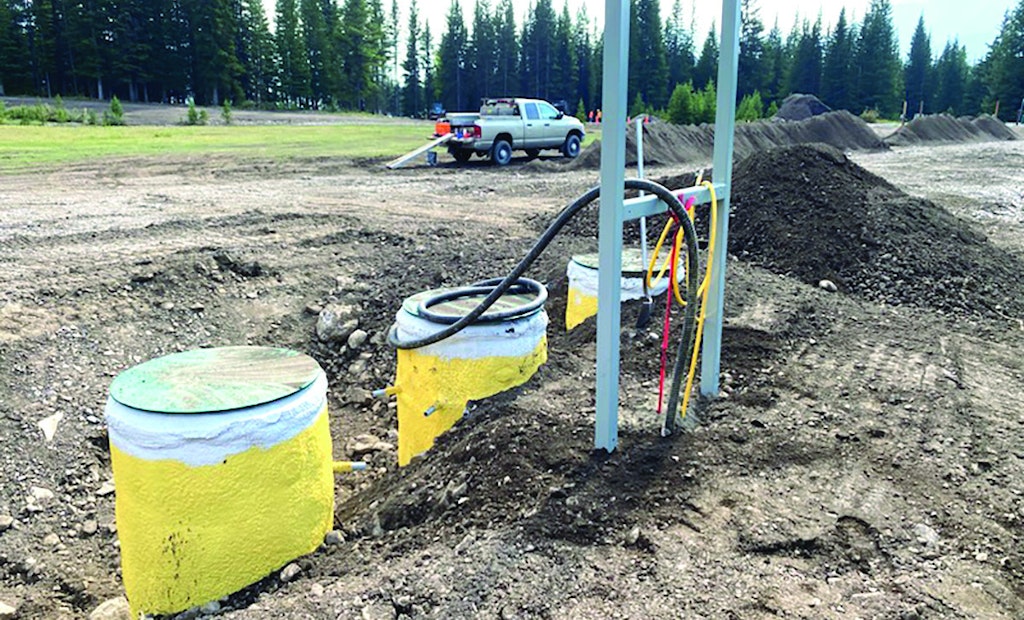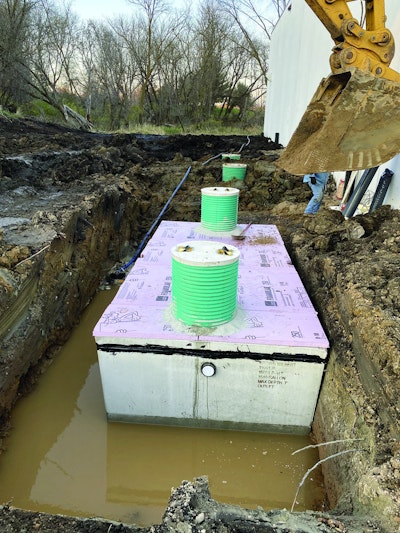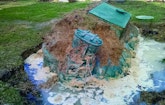
Yellow insulation has been sprayed over the exterior of these risers before backfill to prevent freezing. (Photo courtesy of Clayton Foster)
There are many advantages to keeping septic tanks, pump tanks and other advanced pretreatment units (aerobic treatment units and media filters) shallow. During the design and installation process, potential disadvantages can be accounted for.
As tanks and other components are...







